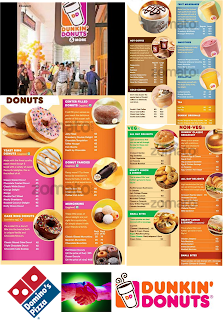First, see my post on Why you should push your landlord to take care of providing Power Back-up. If after all your attempts to negotiate with the landlord to have him/her provide power back-up, you still are in a situation where you will need to take care of this, what do you do?
Assuming you have the space to install a Diesel Generator (DG):
1) Buy a DG for the full power you will require - the cost differential between DGs of different capacities is not high, and typically a DG supplies only about 80% of the rated power consistently - i.e. a 20 KVA DG will generate only 80% of the rated power (i.e. about 16 KVA). For most standalone restaurants the power requirement will be between 10 and 30 KVA of single phase power - To determine your exact power back-up requirements, call a few DG suppliers and they will recommend the specifications of the exact DG you will need.
2) To minimize the ongoing hassles, I would strongly recommend going in for a branded DG. The four most popular and branded options available in the market are Cummins, Kirloskar, Ojus (Ashok Leyland) & Powerol (Mahindra). The price points are not too different between the 4. Cummins (these are the green colour generators you see everywhere today), is considered to be the best of the lot. Kirloskar markets a generator under the brand name "Bliss" - these are the light blue colour generators you see. Kirloskar also sells only their engines and local suppliers use the engine, assemble a generator and sell them under the Kirloskar name too - these are the off-white and light green colour generators you see. These are among the most popular ones in the market today as a lot of customers assume that these are Kirloskar generators and buy them for the lower price. But essentially these are locally assembled generators with the Kirloskar engine. The warranties are offered by the local supplier from whom you buy the DG.
Out of the lot, my research and feedback received from users tells me that you will be wise to invest your money either on the Cummins or the Kirloskar Bliss DGs. But do invite quotes from all of them and decide for yourself.
Now, if you do not have enough or appropriate space to install a DG, what do you do?
1) You can go in for a large capacity UPS (Uninterrupted Power Supply) option - these typically tend to be very expensive - about 5-6 lakhs for a 20 KVA UPS that will give you power for 3-4 hours. The big cost in the UPS is not the UPS system, but the battery bank. You will also need to pretty much replace the entire battery bank once every 3-4 years. In addition, the amount of time you get the power back-up for is restricted. For more back-up time, you will need more batteries and the costs will spiral. Typically UPS power back-up is used in IT server rooms and mission critical applications, where un-iterrupted power rather than power-back-up is required. The battery bank also takes up quite a bit of space (you will need to keep this inside your restaurant in a suitable area - maybe in a loft area created or under a staircase). My recommendation for restaurants would be to not consider the UPS option as a primary power back-up. You can always have a small UPS for a few lights and your billing system and forget about full power back-up.
2) The other option is go for compact small capacity generators (such as the Honda Portable Gensets) to ensure power back-up for only the key electrical appliances and lighting - i.e. for the billing system, lights in the restaurant & kitchen, sign-board, TV/Audio system, Fans, fridges, Chillers and deep Freezers and other small electrical appliances. The big appliances you can't use using these portable gensets will be your kitchen exhaust system and the Air-conditioners. Each AC alone will require one portable genset dedicated for it. Clearly the best portable genset available in the market are the Hondas - They have a fabulous compact genset generating 3 KVA (EU 30) and another one generating a little over 5 KVA (EU 65). These run on petrol engines, but are very quiet and do not generate fumes, are ultra compact and portable with built in wheels. You do not approvals from the Electricity department to use these gensets. You could buy 3 of the smaller EU30s and set-up one for the restaurant area - lightining, TV/audio system, billing system and the sign-boards. The other EU30 could support the fridges, chillers, freezers, kitchen lighting, small kithcen equipment and maybe even a small exhaust fan in the kitchen. Each of these small gensets will cost you about 80K. The large Honda will cost about 150K.
Having said all this, I would still push really really hard to get the landlord to install and maintain a DG for the entire building, which you can tap into.




